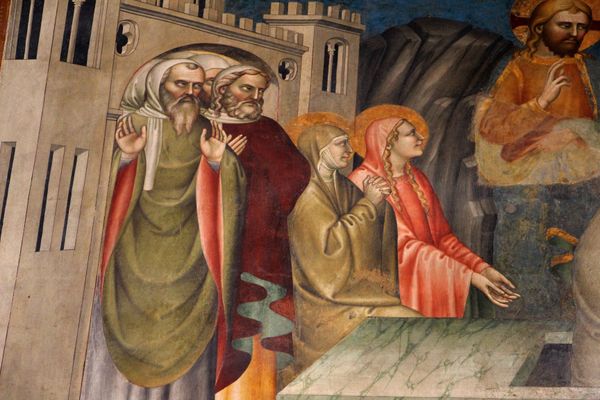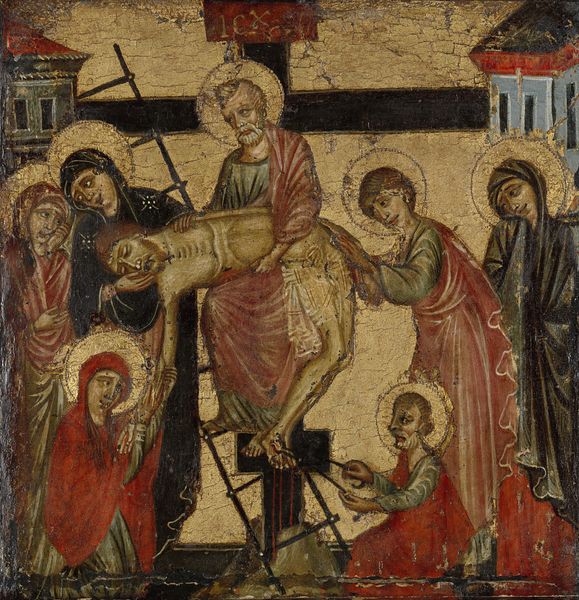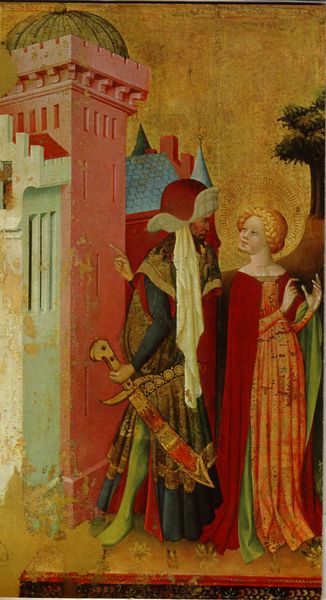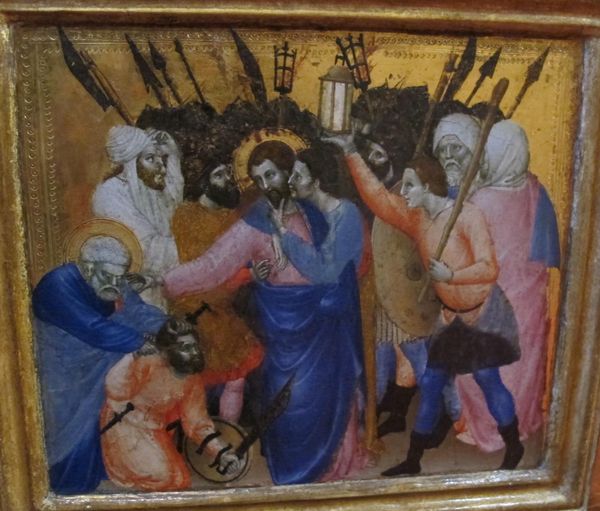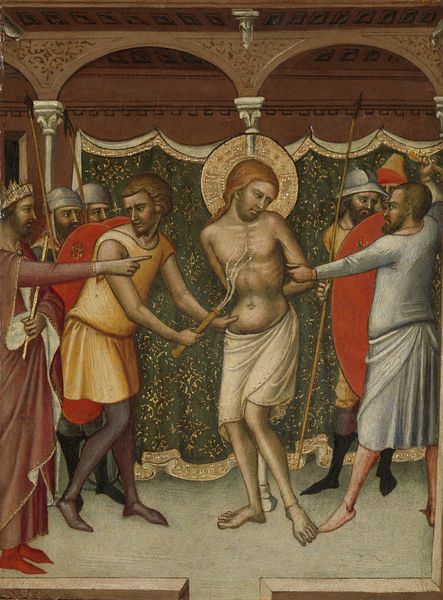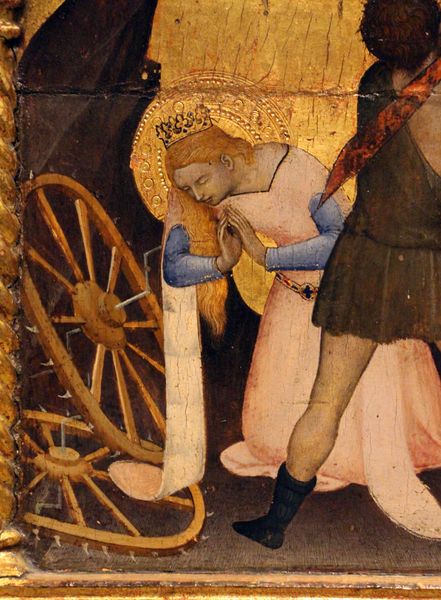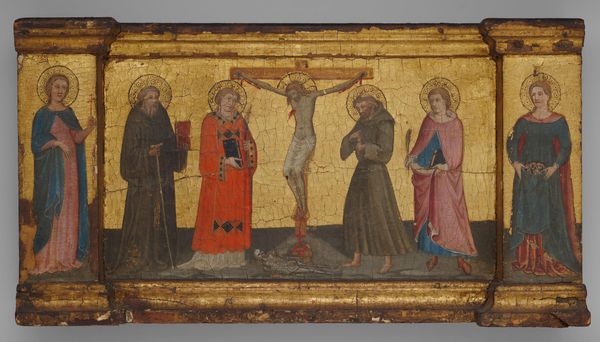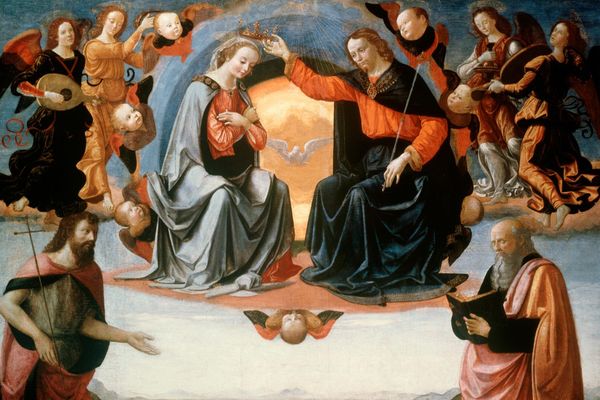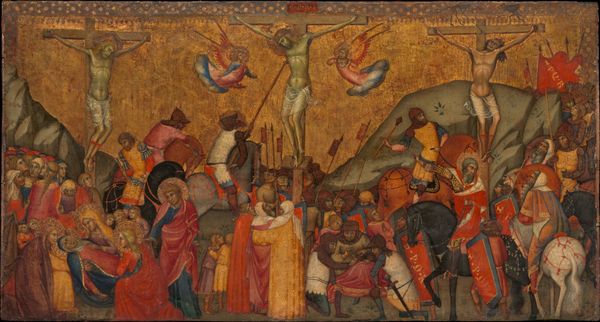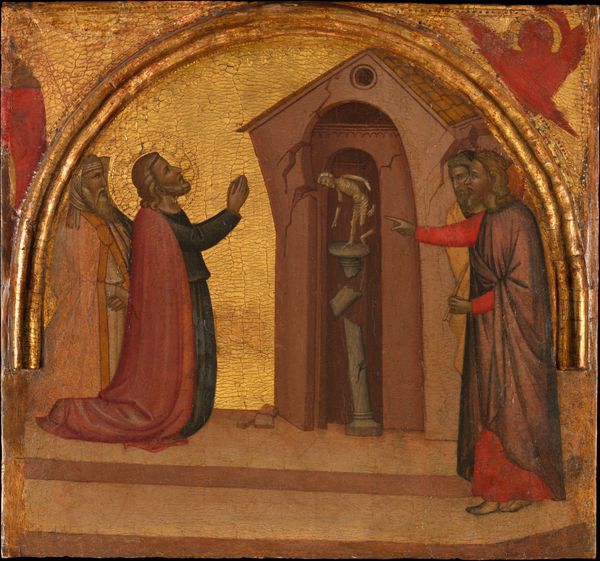
tempera, painting
#
byzantine-art
#
medieval
#
narrative-art
#
tempera
#
painting
#
figuration
#
oil painting
#
history-painting
#
italian-renaissance
Copyright: Public domain
Editor: Here we have Giovanni da Milano’s "Cattura di Cristo" from 1365, executed in tempera. The scene feels quite compressed, with a tension emanating from the clashing figures and weapons. What strikes you most about this work? Curator: The tension you identify is palpable, isn’t it? What grabs me is how Giovanni situates this biblical narrative within the burgeoning socio-political climate of the Italian Renaissance. We see the figures depicted with a certain level of naturalism which humanizes them, a shift away from purely divine representation. Consider the role power plays here – both earthly and spiritual. What power structures are being challenged or upheld, do you think? Editor: I see what you mean about the earthly power, with the armed figures arresting Christ. Is the artist perhaps subtly critiquing the church's involvement in secular matters? Curator: Precisely! This historical context deeply informs the image. Who is wielding the sword? And who are they protecting or attacking, ultimately? Notice also the gaze: where do our eyes linger and who seems to have agency through their look? We could argue the gaze of figures represent not only social strata but moral or intellectual standpoints. It opens doors to analyze from standpoint epistemology. Editor: That's fascinating. So, it's not just a religious scene, but also a commentary on the social dynamics of the time, as well as how certain persons hold privileges over others? Curator: Absolutely. Art often serves as a mirror, reflecting and refracting the complexities of society. Reflect also on the materials themselves—tempera allows for sharp detail, yet flattens the image, reminiscent of earlier Byzantine styles even as it strives for a new naturalism. Can we see this tension between styles, too, as representing cultural conflict? Editor: I never thought of it that way! Considering those aspects makes me view the work through such a different lens. Curator: Exactly! It’s about continuously questioning and seeing art as entangled with the political, the social and identity narratives.
Comments
No comments
Be the first to comment and join the conversation on the ultimate creative platform.
